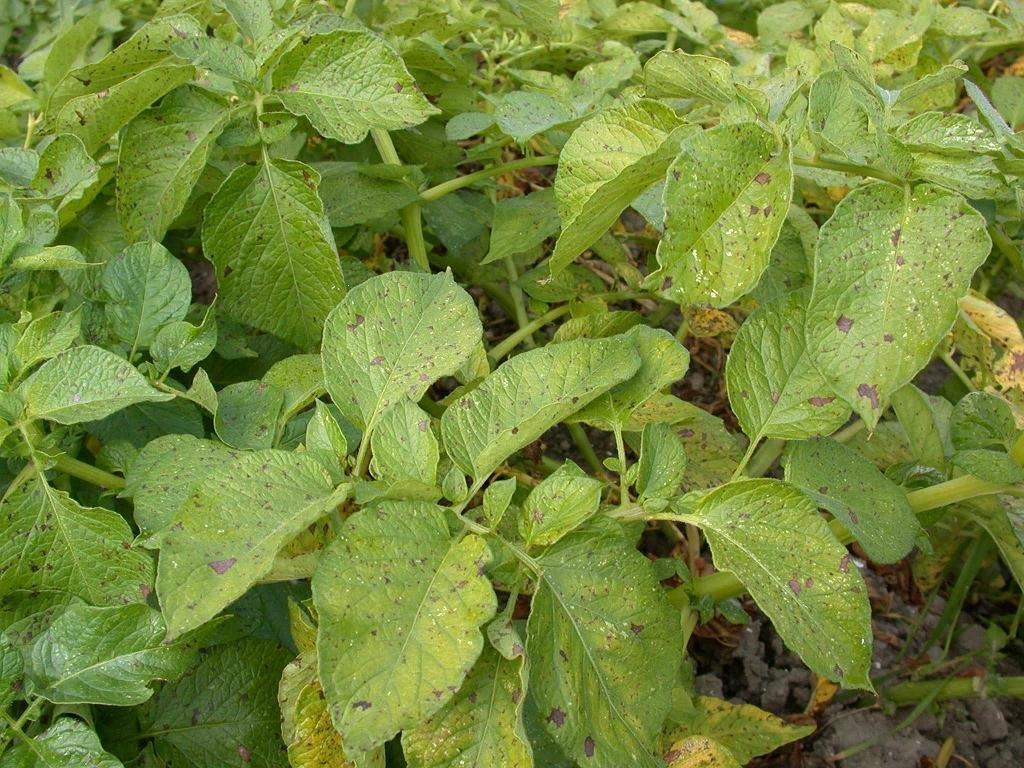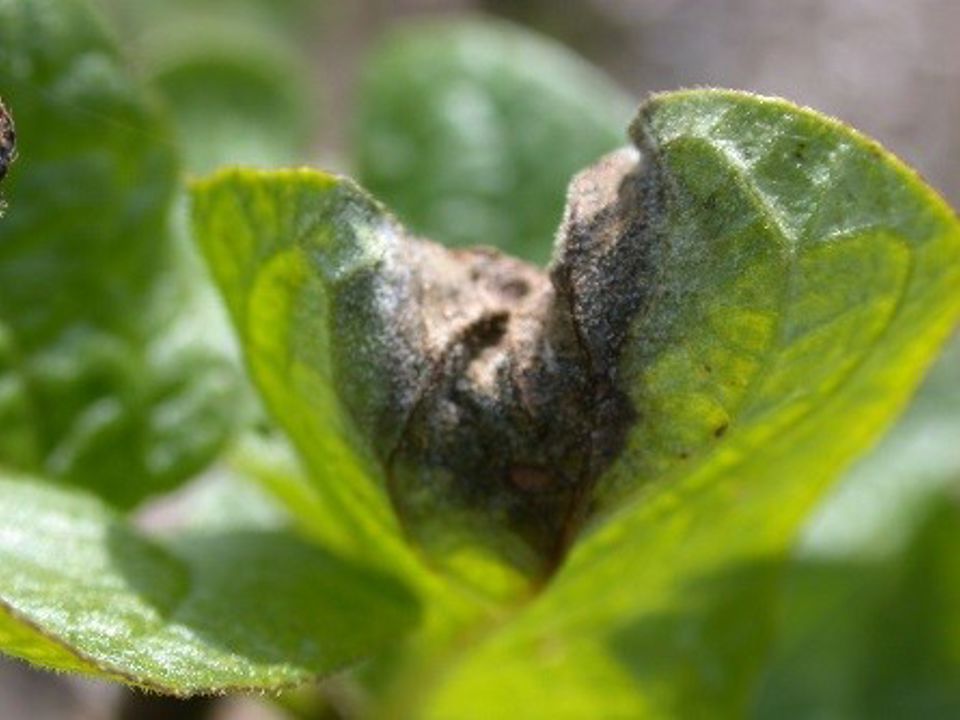Update Phytophthora en Next Generation rassen

Phytophthora-bestrijding in de aardappelteelt
Teeltseizoen 2023 heeft ons duidelijk laten zien dat een hoge infectiedruk van Phytophthora een bedreiging vormt voor de aardappelteelt. Om deze uitdaging ook in de toekomst het hoofd te bieden, is een gezamenlijke inspanning vereist. Wilt u weten hoe? Lees dan verder!

Literatuurlijst bij het artikel getiteld “Update Phytophthora en Next Generation rassen”. Agrico Magazine Potato, April 2024.
[1] Drenth, A., L.J. Turkensteen and F. Govers (1993) The occurrence of the A2 mating type of Phytophthora infestans in the Netherlands; significance and consequences. Neth. J. Pl. Path. 99 (Suppl 3): 57–67.
[2] Schepers, H.T.A.M., G.J.T. Kessel, F. Lucca, M.G. Förch, G.B.M. van den Bosch, C.G. Topper and A. Evenhuis (2018) Reduced efficacy of fluazinam against Phytophthora infestans in the Netherlands. Eur J Plant Pathol 151: 947–960.
[3] van der Lee, T., A. Testa, J. van ‘t Klooster, G. van den Berg Velthuis and F. Govers (2001). Chromosomal deletion in isolates of Phytophthora infestans correlates with virulence on R3, R10, and R11 potato lines. Mol. Plant Microbe. Interaction. 14: 1444-1452.
[4] Goodwin, S.B., L.S. Sujkowski and W.E. Fry. (1995) Rapid evolution of pathogenicity within clonal lineages of the potato late blight disease fungus. Phytopathology 85: 669-676.
[5] Derie, M.L. and D.A. Inglis (2001). Persistence of complex virulences in populations of Phytophthora infestans in western Washington. Phytopathology 91 (6): 606-612.
[6] Swiezynski, K.M., L. Domanski, H. Zarzycka and E. Zimnoch-Guzowska (2000). The reaction of potato differentials to Phytophthora infestans isolates collected in nature. Plant Breeding 119: 119-126.
[7] Smits, M (2024) Nieuwe rassen gevoelig voor nieuwe Phytophthora-variant. Boerderij 109 (21): A11.
[8] Wiepkema, F. (2024) Vijf voor twaalf voor aanpak phytophthora. Akkerwijzer 2024 nr1: 18-21
[9] Müller, K.O. (1951) Über die Herkunft der W-Sorten, ihre Entwicklungsgeschichte und ihre bisherige Nutzung in der praktischen Kartoffelzüchtung. Zeitschrift für Pflanzenzüchtung 29: 366-387.
[10] Malcolmson, J.F. and W. Black (1966) New R genes in Solanum demissum Lindl. and their complementary races of Phytophthora infestans (Mont.) de Bary. Euphytica 15(2): 199-203.
[11] Abu-El Samen, F.M., G.A. Secor and N.C. Gudmestad (2003). Variability in virulence among asexual progenies of Phytophthora infestans. Phytopathology 93 (3): 293-304
[12] Dong, S. and W Ma (2021) How to win a tug-of-war: the adaptive evolution of Phytophthora effectors. Current Opinion in Plant Biology 62; 102027.
[13] Elansky, S., A. Smirnov, Y. Dyakov, A. Dolgova, A. Filippov, B. Kozlovsky, I. Kozlovskaya, P. Russo, C. Smart and W. Fry (2001). Genotypic analysis of Russian isolates of Phytophthora infestans from the Moscow region, Siberia and Far East. Journal of Phytopathology 149 (10): 605-611.
[14] Flier, W.G., L.P.N.M. Kroon, A. Hermansen, H.M.G. van Raaij, B. Speiser, L. Tamm, J.G. Fuchs, J. Lambion, J. Razzaghian, D. Andrivon, S. Wilcockson and C. Leifert (2007) Genetic structure and pathogenicity of populations of Phytophthora infestans from organic potato crops in France, Norway, Switzerland and the United Kingdom. Plant Pathology 56: 562-572.
[15] Forbes, G.A., X.C. Escobar, C.C. Ayala, J. Revelo, M.E. Ordoñez, B.A. Fry, K. Doucett and W.E. Fry (1997). Population genetic structure of Phytophthora infestans in Ecuador. Phytopathology 87, 375-380.
[16] Stewart, H.E. and J.E. Bradshaw (2001). Assessment of the field resistance of potato genotypes with major gene resistance to late blight (Phytophthora infestans (Mont.) de Bary) using inoculum comprised of two complementary races of the fungus. Potato Research 44: 41-52.
[17] Zwankhuizen, M.J. and J.C. Zadoks (2002), Phytophthora infestans's 10-year truce with Holland: a long-term analysis of potato late-blight epidemics in the Netherlands. Plant Pathology 51: 413-423.
